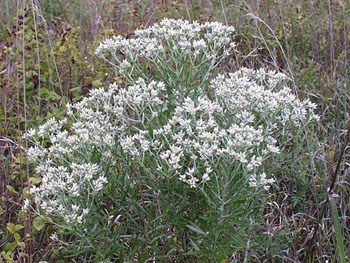Since man first hunted deer centuries ago, he has asked himself, “How can I defeat the deer’s keen sense of smell?” To do so, he developed a masking scent to obscure human odors and make it less likely that a buck will skedaddle before the hunter can shoot.
A wide variety of commercial scent products are available today, but enterprising deer hunters also might want to try lesser-known masking scents that area free for the taking or easy to make at home. Some simple yet effective methods have been around for generations.
Related: Making sense of deer scents
Pine needles, apples and rabbit tobacco
Hunters have long used pine needles to conceal human odors. Pick a handful of fresh needles, break and rub them between your palms, and wipe the juice on your hunting clothes. Leaves from cedar trees and other evergreens also work, but always use types found in the area you’re hunting.
One old-timer with whom I hunted decades ago went a step further in his use of pine as a masking scent. He would stuff a jar with fresh needles, add denatured alcohol to cover them and then seal the jar and allow the needles to steep several weeks. When the resulting concoction was applied to skin or clothing, the veteran deer man said, the alcohol would quickly evaporate, leaving only the pungent smell of pine. I can’t testify to the effectiveness of his home-brewed scent, but he used it every time he hunted deer and killed many trophy bucks.

The aromatic leaves and flowers of rabbit tobacco (Gnaphalium obtusifolium) have been used as masking scents since at least the 18th century. (credit Missouri State University)
Another masking scent long used in piney-woods country is turpentine — a pure product distilled from pine resin. Turpentine oil or essence — available from some aromatherapy companies — can also be used. Just a few drops on your boots and pants should do the job. Be careful not to use too much, though. Turpentine has a strong odor, and overuse could make deer cautious.
When hunting areas where apple trees are common, some hunters mask scent by halving an apple and rubbing the juicy side on their clothing. Another method is spritzing your clothes and the area around your stand with a squirt bottle full of apple cider. A medicinal plant called rabbit tobacco (Pseudognaphalium obtusifolium) was used by mountain men and Native Americans as early as the 18th century. A handful of the plant’s aromatic leaves and flowers would be gathered, crushed and wadded into a tight ball , then placed in clothing or beneath a hat band. Rabbit tobacco grows as far north as Manitoba to Nova Scotia and as far south as Texas and Florida. Deer within its range are accustomed to its sweet, fragrant smell. Look for it growing in dry, open areas such as old fields, logging roads and abandoned homesites. The plant stands 1 to 3 feet high and has narrow leaves that are dark green on top and silvery-gray beneath. Rabbit tobacco also goes by the names sweet balsam, cudweed, featherweed, sweet everlasting and poverty weed.
Beyond plant-based options
Using plants and plant products isn’t the only way to mask scent. In years past, hunters smoked their clothes and equipment over campfires to destroy human odor. When hunting around cattle farms, some hunters impart the familiar scent of livestock to clothing by hanging their garments in a barn overnight.
Many hunters use deer urine, as well. It’s not only an excellent masking scent, but a good lure to use during the rut, especially when hunting scrapes. A supply is easily obtained by removing a deer’s bladder when field-dressing the animal, being careful not the spill the contents on the meat and emptying the urine in a freezer bag or jar. It stores well in a freezer between hunting trips, but be sure the mark the container clearly so the contents won’t be mistaken for soup stock!
To cover your scent when walking to your stand or stalking, put some deer urine in a medicine bottle with a squeeze applicator and squeeze a few drops on your boots and pant bottoms. This will do an excellent job covering your scent when you’re moving through the woods.
Related: Banning deer urine to fight the spread of CWD is the lazy man’s quick-fix
Don't forget about wind
Remember, no matter how effective your masking scent is, you still must hunt with the wind in your favor. Even the best cover scent won’t hide all human odors. Also, understand that masking scents are an aid to hunting success; not a shortcut. You still must use other skills and proven techniques.
Nevertheless, using masking scents will help you operate in a deer’s territory while reducing the chance its radar-like nose will detect you. And when pitting ourselves against animals whose senses are much keener than ours, we need every bit of help we can get.
Photo by Nick Trehearne Photography






